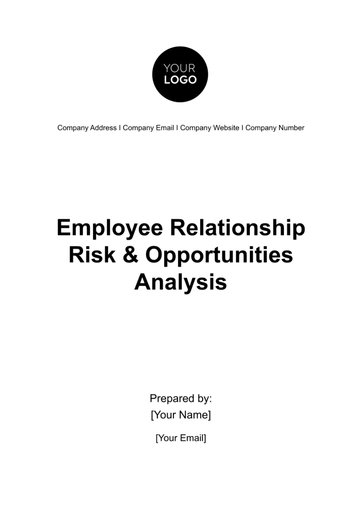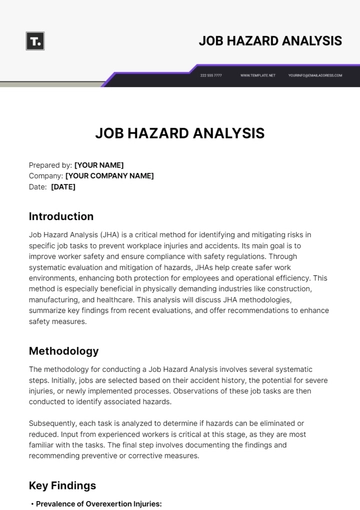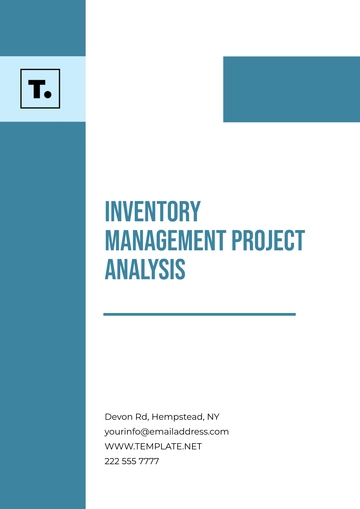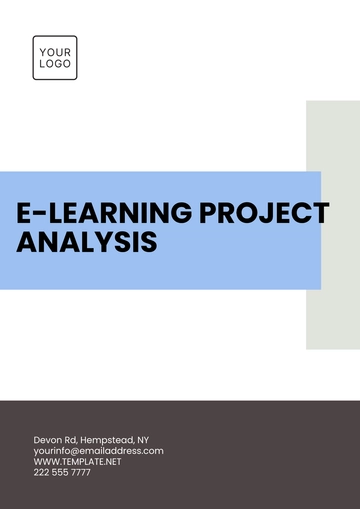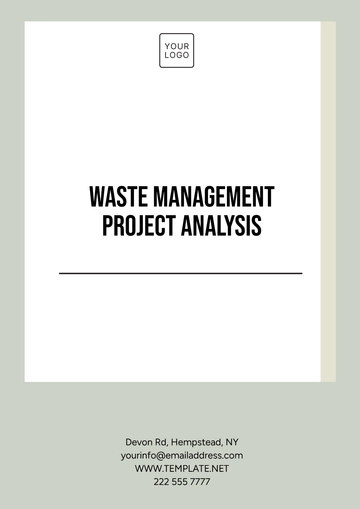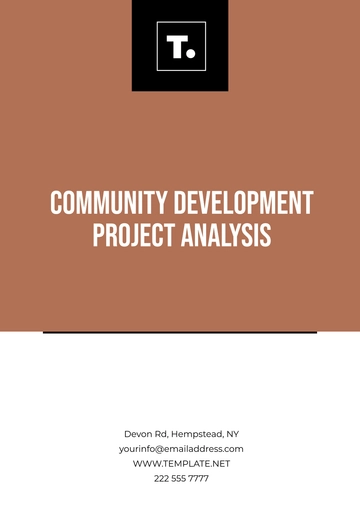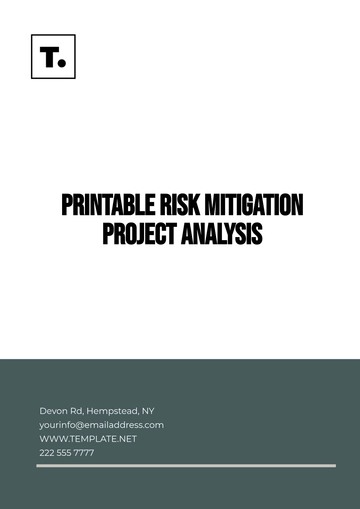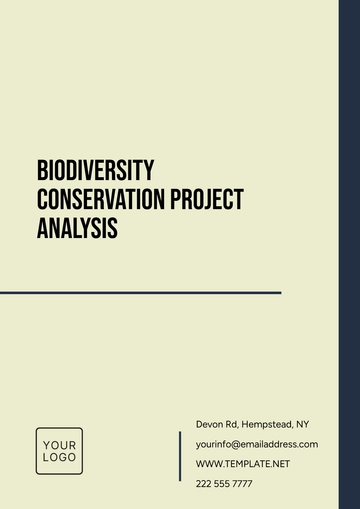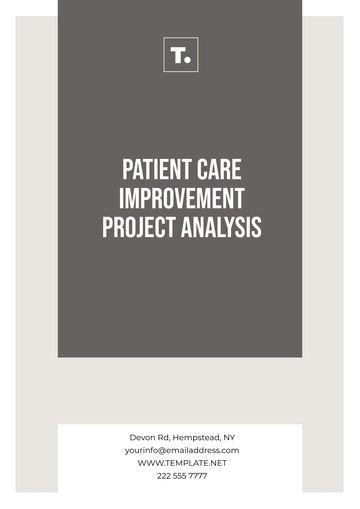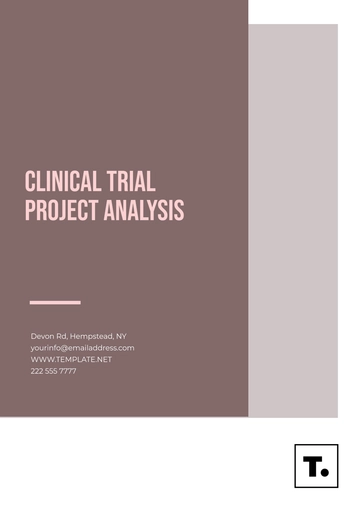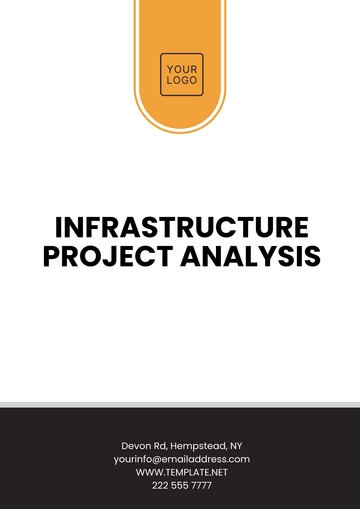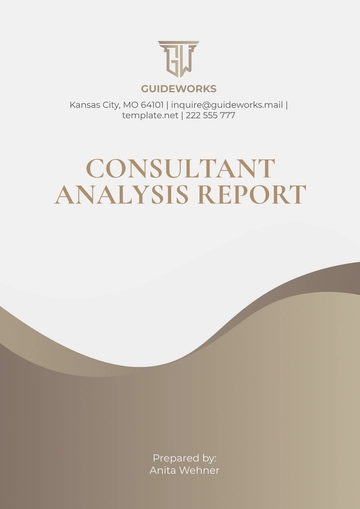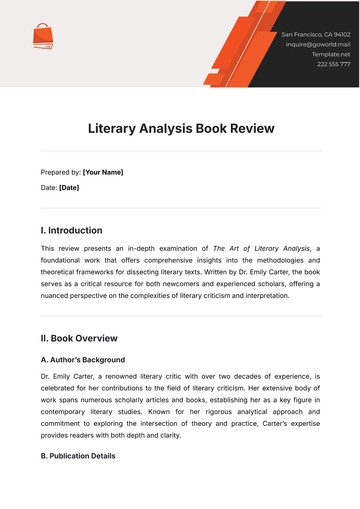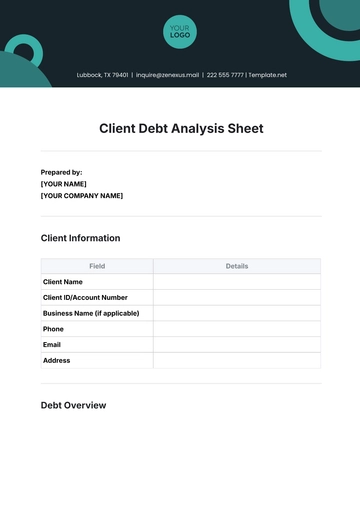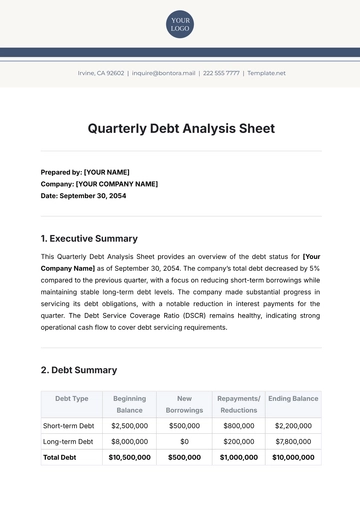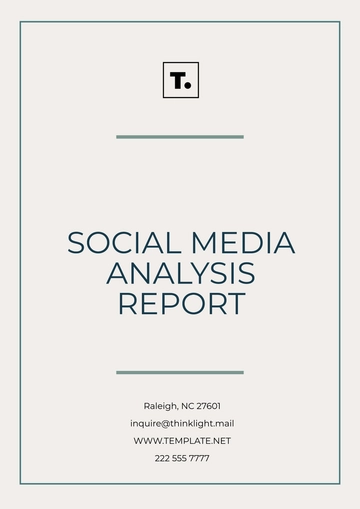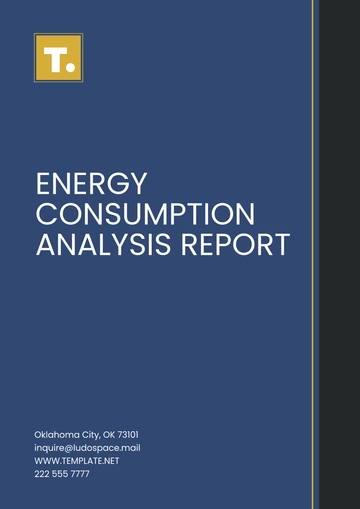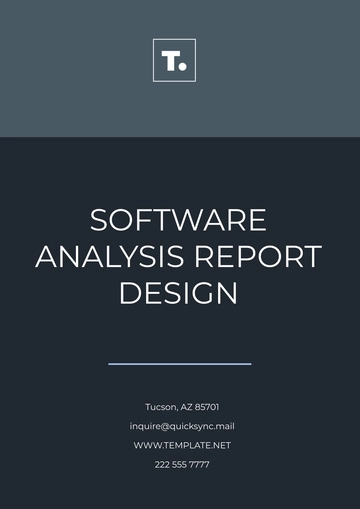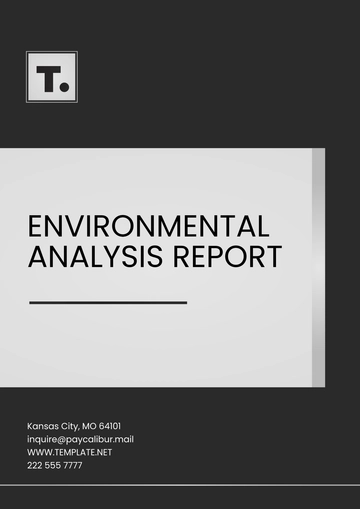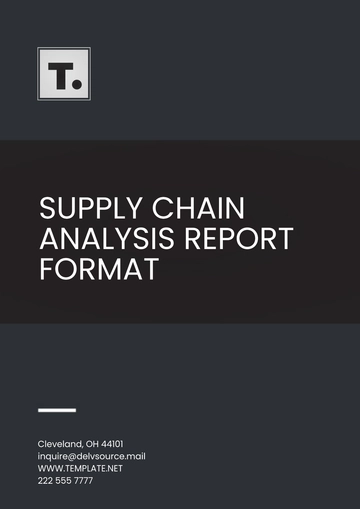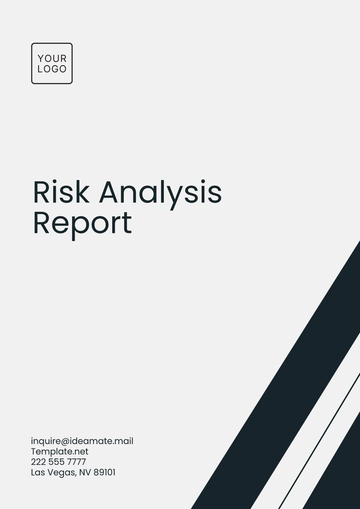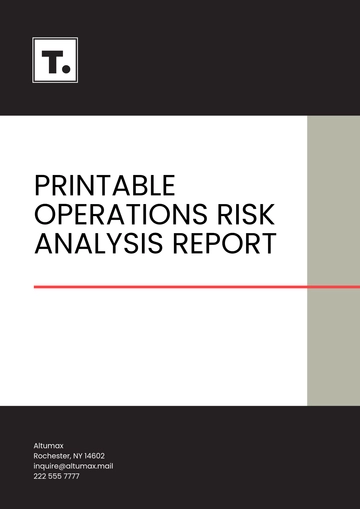Free Hazard Impact Analysis
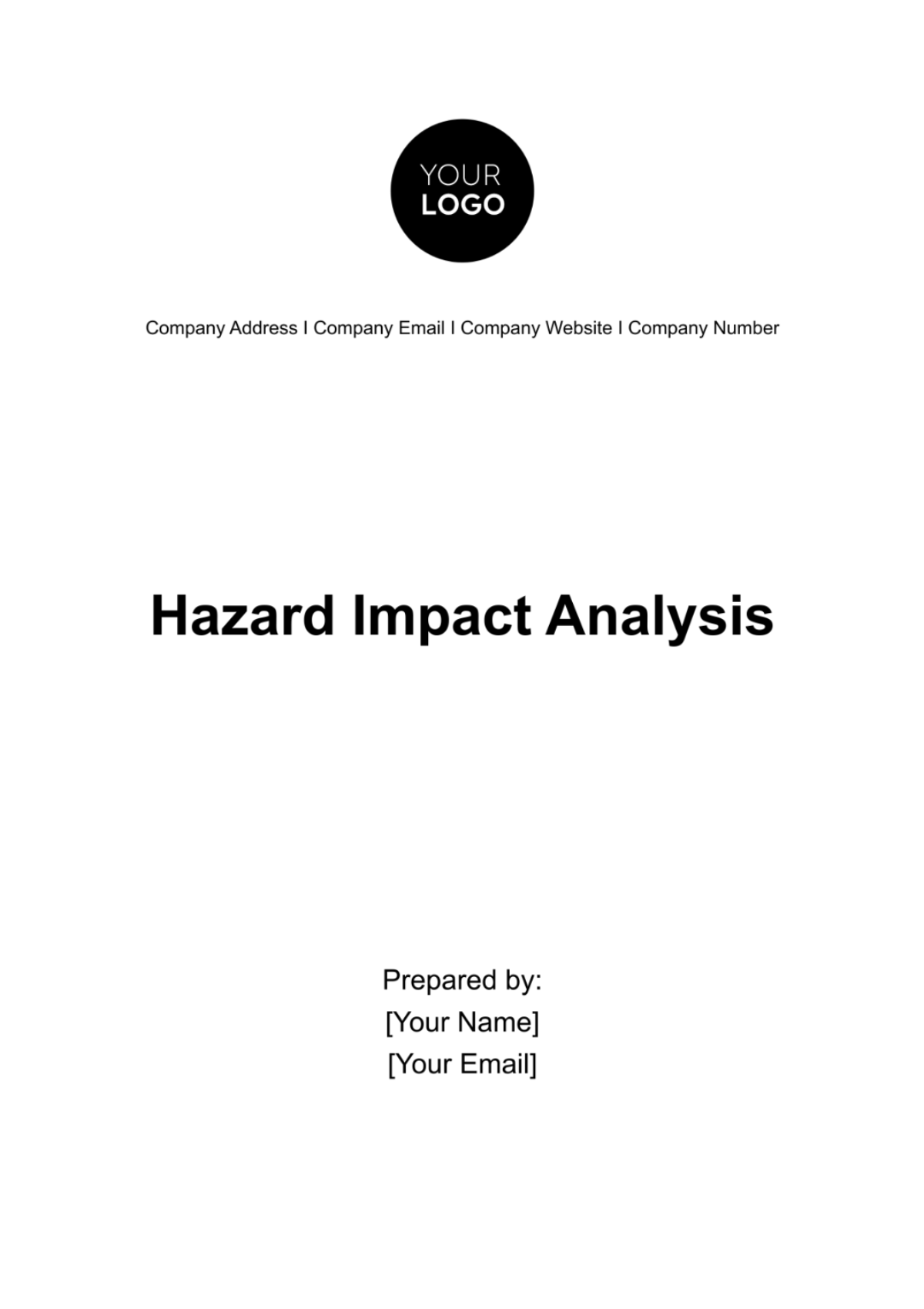
A. Introduction
Welcome to the Hazard Impact Analysis (HIA) prepared by [Your Company Name]. This comprehensive analysis is designed to assess and mitigate potential hazards in accordance with the stringent health and safety standards outlined by relevant US laws and regulations.
Purpose
The primary purpose of this HIA is to identify, evaluate, and prioritize hazards that may pose risks to the health and safety of our employees, stakeholders, and the communities in which we operate. We are committed to complying with all applicable US legal and regulatory requirements, including OSHA and EPA.
B. Scope and Objectives
Scope
This Hazard Impact Analysis (HIA) encompasses all aspects of our operations at [Your Company Name], including facilities, products, and services, within the jurisdiction of US health and safety regulations. It considers potential hazards and their impact on employees, stakeholders, and the broader community.
Objectives
Identification: Identify and document all potential hazards and risks associated with our operations.
Evaluation: Assess the likelihood and severity of each identified hazard's impact.
Prioritization: Prioritize hazards based on their risk level to facilitate effective mitigation efforts.
Mitigation: Develop strategies and measures to reduce or eliminate hazards, aligning with US health and safety standards.
Emergency Preparedness: Establish comprehensive emergency response plans to safeguard lives and assets.
Compliance: Ensure full compliance with all relevant US health and safety laws and regulations.
Continuous Improvement: Implement a system for ongoing monitoring, review, and improvement of our safety measures.
By delineating the scope and objectives of this analysis, we aim to create a safer work environment, protect our stakeholders, and remain steadfast in our commitment to regulatory compliance and excellence in health and safety practices.
C. Hazard Identification
In this section, we will comprehensively identify potential hazards that could impact the operations of [Your Company Name]. These hazards have been categorized and described in detail to facilitate a better understanding of their nature and potential consequences. The table below provides a summary of these hazards:
Hazard Category | Hazard Description |
Natural Hazards | Various natural events and phenomena that can impact operations. |
Chemical Hazards | Hazards related to the use, storage, and handling of chemicals. |
Physical Hazards | Hazards stemming from physical factors in the workplace. |
Biological Hazards | Risks associated with exposure to biological agents. |
Ergonomic Hazards | Hazards related to ergonomic factors and physical strain. |
D. Risk Assessment
In this section, we will evaluate the likelihood and severity of each identified hazard's impact on [Your Company Name]. To ensure consistency and objectivity in our assessment, we will employ a standardized risk assessment matrix, which considers both the likelihood and severity of each hazard. This matrix will assist us in categorizing the risks into levels that will guide our prioritization and mitigation efforts.
Likelihood/ Severity | Low (1) | Moderate (2) | High (3) | Very High (4 |
Low (1) | Low | Low-Moderate | Moderate | High-Moderate |
Moderate (2) | Low-Moderate | Moderate | High-Moderate | High |
High (3) | Moderate | High-Moderate | High | Very High |
Very High (4) | High-Moderate | High | Very High | Very High |
In this matrix:
Likelihood is assessed on one axis (Low to Very High), indicating how likely it is for the hazard to occur.
Severity is assessed on the other axis (Low to Very High), indicating the potential impact or harm caused by the hazard.
To use the matrix, assess each hazard's likelihood and severity and then place it in the corresponding cell. The resulting category (e.g., Low, Moderate, High) will help prioritize hazards for mitigation efforts.
E. Consequence Analysis
In this section, we will conduct a comprehensive analysis of the potential consequences associated with each identified hazard. It is essential to consider both immediate and long-term effects to fully understand the impact these hazards could have on [Your Company Name]. Below, we outline the potential consequences of the hazards previously identified:
Hazard Category | Immediate Consequences | Long-Term Consequences |
Natural Hazards |
|
|
Chemical Hazards |
|
|
Physical Hazards |
|
|
Biological Hazards |
|
|
Ergonomic Hazards |
|
|
F. Vulnerability Assessment
A Vulnerability Assessment is a crucial step in understanding how susceptible your organization is to various hazards. This assessment goes beyond identifying hazards themselves and focuses on examining your organization's preparedness and resilience in the face of these hazards. Here's a more in-depth look at what it involves:
Natural Hazards: When assessing vulnerability to natural hazards, consider the specific vulnerabilities of your facilities and infrastructure. For instance, if you're in an earthquake-prone area, evaluate the seismic resilience of your buildings. Flood-prone regions should have flood protection measures in place. Identifying these vulnerabilities allows you to prioritize upgrades and preparedness measures.
Chemical Hazards: Vulnerability here relates to the storage and handling of chemicals. Ensure that storage facilities meet regulatory standards and have containment measures to prevent spills. Employee training in proper chemical handling and emergency response protocols is essential to mitigate chemical hazards effectively.
Physical Hazards: Physical security vulnerabilities involve assessing how well your facilities are protected from threats such as unauthorized access, vandalism, or break-ins. This assessment may lead to improvements in security systems and procedures.
Biological Hazards: Evaluate vulnerability to biological agents by examining hygiene and sanitation practices, especially in environments like healthcare or food service. Ensure that protective measures such as personal protective equipment (PPE) and sanitation protocols are in place to prevent the spread of biological hazards.
Ergonomic Hazards: Vulnerability to ergonomic hazards can be reduced by analyzing workspaces and equipment. Ergonomic improvements, like proper workstation setups and ergonomic equipment, can significantly reduce the risk of musculoskeletal injuries among employees.
G. Risk Prioritization
Risk prioritization is a critical step in the Hazard Impact Analysis process. It involves ranking hazards based on their level of risk, taking into account both their likelihood of occurrence and the severity of their potential impact. This prioritization allows organizations like [Your Company Name] to focus their resources and efforts on addressing the most critical threats first.
By systematically assessing and categorizing hazards, you can identify which ones pose the highest risk to your operations, employees, and stakeholders. The prioritization process ensures that limited resources are allocated where they are needed most urgently, helping to reduce the likelihood of incidents and their potential consequences.
In accordance with US health and safety standards, risk prioritization provides a strategic framework for decision-making, enabling you to develop targeted mitigation strategies and emergency response plans that address the most significant risks effectively.
H. Mitigation Strategies
In this section, we outline strategies and measures to mitigate the identified hazards, all of which align with relevant US health and safety standards. The table below provides a structured overview of these strategies:
Hazard Category | Mitigation Strategies |
Natural Hazards |
|
Chemical Hazards |
|
Physical Hazards |
|
Biological Hazards |
|
Ergonomic Hazards |
|
I. Emergency Response Plan
In the event of an emergency, [Your Company Name] is committed to the safety and well-being of our employees, stakeholders, and the surrounding community. Our ERP is designed to provide clear and efficient procedures for addressing various hazards, in accordance with US health and safety standards. Key components of our ERP include:
Communication: In case of an emergency, use the designated communication channels to alert employees and relevant authorities promptly.
Evacuation: Evacuation routes and assembly points are clearly marked and communicated. Employees should follow evacuation procedures as outlined for each hazard.
Emergency Contacts: Maintain a list of emergency contacts, including local authorities, medical services, and company response teams.
Response Teams: Trained response teams are designated for each hazard category to manage and coordinate emergency actions effectively.
Resource Allocation: Procedures for resource allocation, including equipment, personnel, and supplies, are outlined to support emergency response efforts.
This ERP ensures a rapid and organized response to emergencies, safeguarding lives and property while adhering to the highest safety standards.
J. Monitoring and Review
Continuous monitoring and review are integral to maintaining the effectiveness of our hazard mitigation measures and the overall Hazard Impact Analysis (HIA). Our process includes:
Regular Assessments: We conduct periodic assessments to evaluate the ongoing relevance and effectiveness of mitigation strategies and the HIA itself.
Data Collection: Data related to hazard incidents, near misses, and feedback from employees and stakeholders are collected and analyzed.
Documentation Updates: Any changes, lessons learned, or new information are documented promptly and integrated into the HIA and mitigation plans.
Revisions: Based on assessments and emerging risks, we make necessary revisions to the HIA, mitigation strategies, and emergency response plans to ensure alignment with US health and safety standards.
This proactive approach to monitoring and review ensures that our safety measures remain up to date and effective, continuously promoting a culture of safety and compliance.
- 100% Customizable, free editor
- Access 1 Million+ Templates, photo’s & graphics
- Download or share as a template
- Click and replace photos, graphics, text, backgrounds
- Resize, crop, AI write & more
- Access advanced editor
Uncover potential risks and their impact with Template.net's Hazard Impact Analysis Template. This editable and customizable tool, accessible through our Ai Editor Tool, enables you to assess hazards comprehensively. Identify vulnerabilities, mitigate risks, and enhance safety protocols effortlessly with Template.net's user-friendly and innovative solutions.
